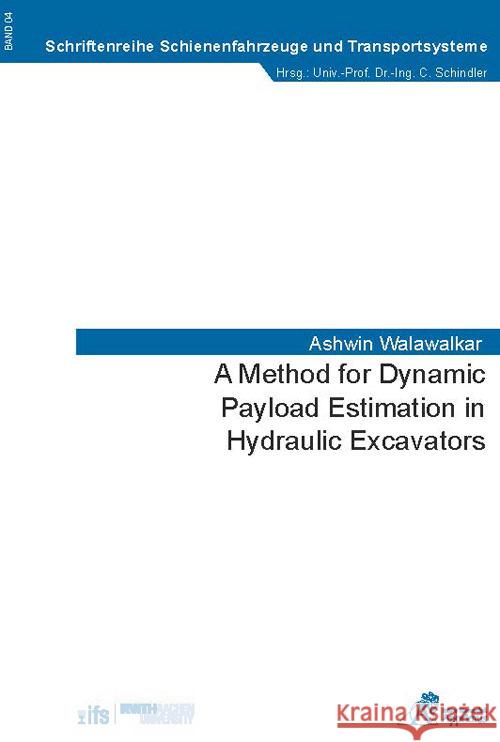A Method for Dynamic Payload Estimation in Hydraulic Excavators » książka
A Method for Dynamic Payload Estimation in Hydraulic Excavators
ISBN-13: 9783985551293 / Angielski / Miękka / 174 str.
This work discusses the development and application of payload estimation for mobile hydraulic excavators. The methods and results described here are however broadly applicable to any agricultural and construction machines that interact with the environment using a mechanical manipulator. Three key requirements were laid out to define the boundary conditions for the payload estimation method. The first was derived from the standard requirement for on-board weighing scales for construction equipment, which states that the estimate should be within 1% of the full-scale value of the machine. The second states that the accuracy of the payload estimate must be reliable for any given trajectory performed by machine. The third was that the payload estimation should be self-sufficient in the sense that all input parameters necessary to estimate the payload must also either be measurable using standard measurement devices or should also be estimated using a separate identification process.To this end, an analytical model relying on the principles of general technical mechanics was first developed, which expressed the payload as a function of joint torques and motion parameters. The required inertial parameters of the manipulator links and the friction effects were estimated using parameter identification for reference trajectories. For model verification, a multi-body simulation (MBS) model of the target excavator was developed. The MBS verification experiments showed that estimation accuracy falls short of the requirement, primarily due to the quality of the estimation of the input parameters. Accordingly, the model for payload estimation was complimented using a machine-learning (ML) model that uses a data-driven approach to significantly increase the accuracy of the payload estimate. In the final step, the combination of the analytical and ML model was validated using real world measurements performed on the target excavator.The validation results showed that the requirements for the payload estimation were successfully met using the combination of the physics-based analytical model and the data-driven ML-model.
This work describes a method for accurate and dynamic payload estimation for mobile hydraulic excavators. It comprises of a base analytical model that expresses the payload as a function of joint torques and motion parameters, complimented using a machine-learning model that uses a data-driven approach to significantly increase the accuracy of the overall payload estimate. Measurements performed on a target excavator validate the accuracy of the method under real world conditions.











